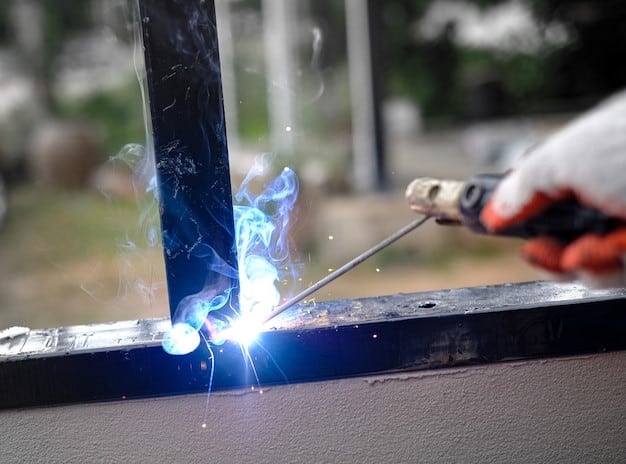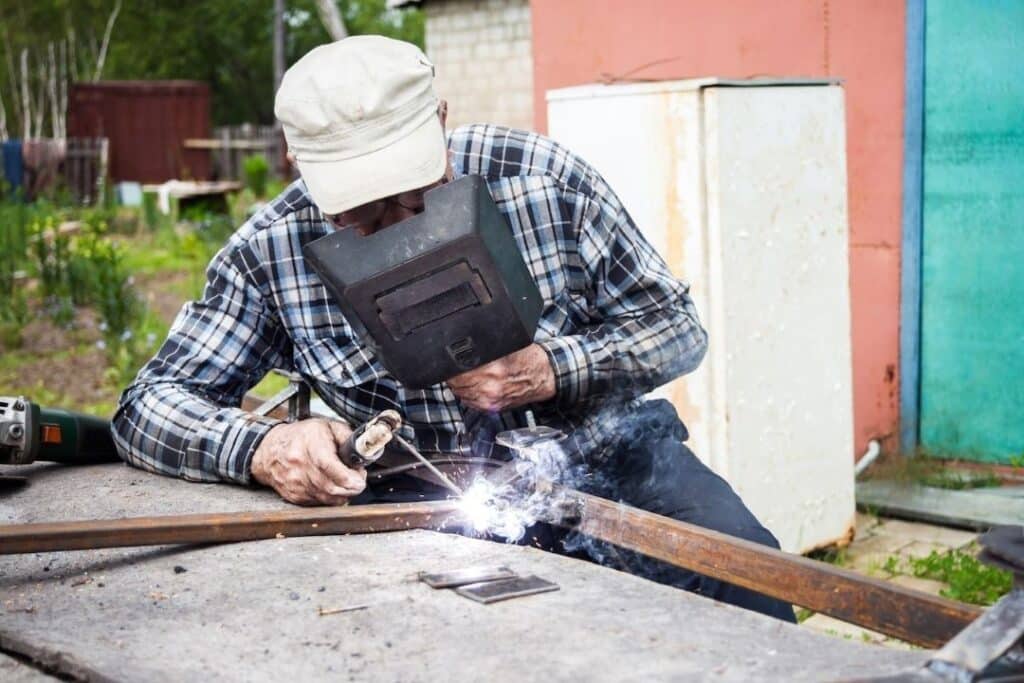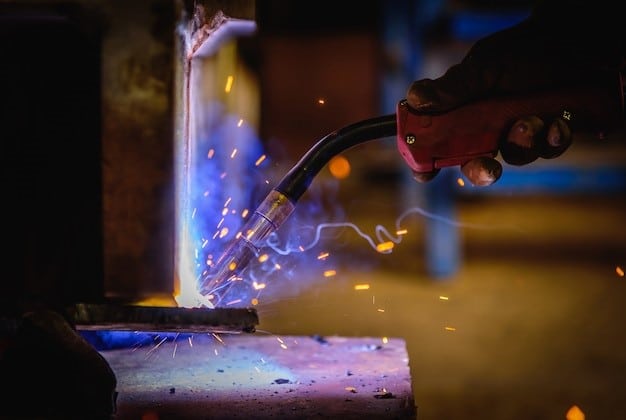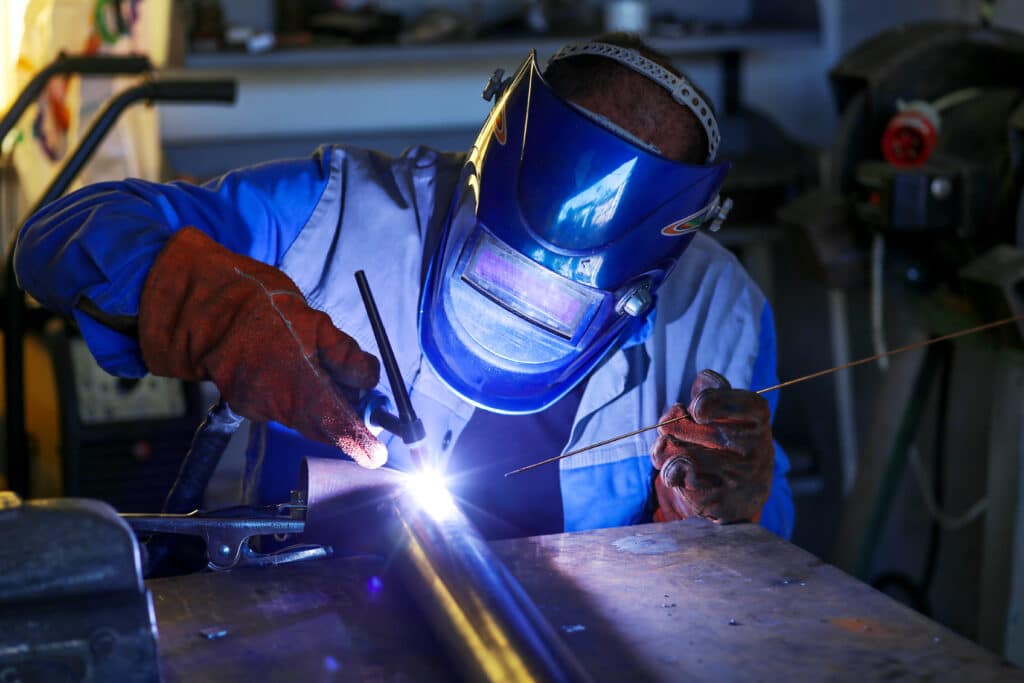Not all welding jobs require the involvement of a high-power machine; some jobs require the power of a low power welding machine. A low-power welder is the perfect combination of sufficient power, user-friendliness, and affordability.
Whether you’re a professional or DIY enthusiast looking for an ideal welder for light-duty welding jobs, the low-power welding machines perform the jobs consistently. Let’s explore why these machines are an excellent choice for welders who don’t want to break their banks.
What Are Low-Power Welding Machines?

Low-power welding machines consume little power and provide an efficient welding solution for applications that require lower amperage and voltage. These machines suit small workshops, DIY projects, and simple home maintenance.
Generally, low power welding machines utilize power ranges between 80 and 150 amps and operate at 110V or 220V power supply. These machines can handle welding tasks like joining lightweight metals, fabricating thin metals and thin sheets, etc.
Moreover, low-power welders are lightweight, easy to operate, portable, and affordable. They also have easy-to-adjust and easy-to-control settings, which allow every user to operate the machine conveniently.
These entry-level welders are suitable for hobbyists or users who perform lightweight welding tasks. Using them for industrial jobs can’t bring satisfactory results; it will make the job faulty and time-consuming. However, professional welders can achieve flawless results with their expertise.
Key Features of Low-Power Welding Machines
Low-power welding machines consume less electricity than conventional welding machines but provide excellent features. Some of the key features of these machines are the following.
- Compact and Portable
- User-Friendly Controls
- Power Efficiency
- Versatile Operations
- Safety Features
Compact and Portable: Low-power machines are easy to transport because they are lightweight. Their portable design makes them suitable for fieldwork or instant on-site applications. Moreover, because of their smaller size, they can be easily stored.
User-Friendly Controls: A low power welding machine is convenient to use because of its simple mechanism. That’s why it’s also suitable for beginners. Also, to help control the welding process, the model comes with clear display and many easy-to-use features.
Power Efficiency: Portable welders maximize power usage with minimum electricity. Thus, electricity costs are reduced, and they are suitable for areas with low energy requirements. These machines can also help with energy conservation.
Versatile Operations: These machines can provide different types of welding processes. For example, MIG, TIG, and Stick welding processes can be followed with these machines with various materials like stainless steel, aluminum, titanium, etc.
Safety Features: Simple welding machines have necessary safety features, such as a stable arc, overheating protection, shutdown when overloaded, etc. These features ensure protection for both the user and the welding equipment.
Types of Low-Power Welding Machines

Low-power welding machines work efficiently for small-scale applications. Below, we explore the general types of these welders.
- MIG Welders
- TIG Welders
- Stick Welders
- Inverter Welders
MIG Welders
These welders are a versatile solution to work for different applications. The mechanism of these welders utilizes an electrode and inert gas (shielding gas).
MIG welder wholesale is ideal for welding projects about thin materials such as sheet metal. They offer maximum efficiency with minimal power consumption. MIG welder low power model suits most home welding projects.
TIG Welders
These welders are used for jobs that demand high-quality and detailed welds. The TIG welding process uses a tungsten electrode and a shielding gas. TIG welder suppliers recommend that they produce clean welds with little spatters. They suit most thin materials, such as stainless steel and aluminum.
Stick Welders
Stick welders employ a consumable electrode coated with flux to produce a protective gas when welding. These machines are robust and perform properly outdoors. They work for heavy-duty welds. Moreover, the stick welder is easy to maintain and last longer.
Inverter Welders
Inverter welders are built for light-welding uses. They are lightweight, compact, and highly efficient. Professionals and hobbyists can use these machines for light to heavy welding tasks. Energy efficiency and flexibility are the key features of these models.
Common Uses of Low-Power Welding Machines

The versatile low-power welding machines are perfect for tasks where precision and portability matter. Let’s check some common uses:
Home and DIY Projects
Low power welding machines are ideal for small DIY projects. They can repair broken metal furniture, fix gates, or help create small items like shelves. Their compact size and simplicity make them easy to handle and store. They are beginner-friendly, so you don’t need to be an expert to achieve the best welds.
Automotive Repair and Maintenance
These machines are economical choices for minor automotive repairs and maintenances. Their low heat output ensures thinner materials won’t warp or overheat. As a result, they can reduce the risk of damaging delicate parts and repair costs. They are perfect for fixing car panels, repairing exhaust pipes, or attaching brackets.
Small Fabrication Shops
Low-power welders are a reliable tool for small businesses. They handle light-duty tasks like assembling frames, joining metal structures, or repairing tools. Their efficiency ensures steady and consistent welds while saving on electricity costs.
Art and Designs
Creative designers use low-power welding machines to create amazing creations such as metal sculptures, jewelry, or decorative pieces. These machines allow artists to ensure detailed work and clean welds. Their lightweight and portable build makes them suitable for working in a small studio.
Low-Power Welding Machines: Pros and Cons

If welding were a competition, a low power welding machine would be the champion of the lightweight division.
Low-power welders are designed for simpler welding jobs. They have some pros, but there are also cons on the other side.
Low-Power Welder Pros
- Simple designs of these machines allow users to complete light welding tasks with ease.
- Low-power welders use less electricity. It means there will not be a skyrocketing power bill at the end of the month.
- These welders are light and easy to carry. You can easily move and store them anywhere.
- User-friendly controls make these welders ideal for beginners.
Low-Power Welder Cons
- Low-power welders are not suitable for heavy-duty or industrial applications.
- These machines are designed particularly for simpler tasks. One may struggle when there will be any tough metal.
- They are good to work slowly and steadily. These will take more time to complete a large project.
Final Thoughts
Low-power welding machines are affordable and efficient. They can be utilized for small and medium welding tasks. However, professional welders can also use them for big projects. Their user-friendly nature and versatility make them suitable for home repairs and light industrial welding tasks.
In a nutshell, when looking for a reliable welding machine for handling your day-to-day tasks, a low-power welder can be the smart choice to fulfill your welding journey.
YesWelder: Partnering with a Professional Welding Machine Supplier
Looking for a welding equipment supplier you can rely on? Meet YesWelder, which provides top-quality, reliable, and affordable welding tools. The company offers a wide variety of welding machines and accessories, making wholesale buying effortless for distributors.
Individuals can also quickly make a choice from its wide variety of selections. When you want top-notch tools for your next successful welding project, YesWelder can be your clear choice.
FAQs
What welding processes can a low-power welder handle?
Low-power welding machines can handle almost all available welding processes, including TIG, MIG, and Stick. The capabilities of the selected welders can be changed based on their model and features.
Who can use a low power welding machine?
Hobbyists and professional users can choose a light-duty welder if their projects require light-duty welds. This portable machine is ideal for DIY enthusiasts who perform small welding as repair and decoration.
What is the duty cycle of a welding machine?
The duty cycle is the operating time of a welding machine in a 10-minute period before needing to cool it. Low-power welders come with shorter duty cycles, such as 20-40%.
Are low-power welders easy to transport?
Low-power welding machines are compact and lightweight. They’re also portable, which makes them easy to store and transport. Some units have carrying handles to make transportation easier.
What to consider when buying a low-power welder?
When selecting a portable welder, consider its compatibility with your project. Also, carefully examine the machine’s amperage range, build quality, duty cycle, and safety features. Be sure that the machine is efficient enough to fulfill your welding needs.



